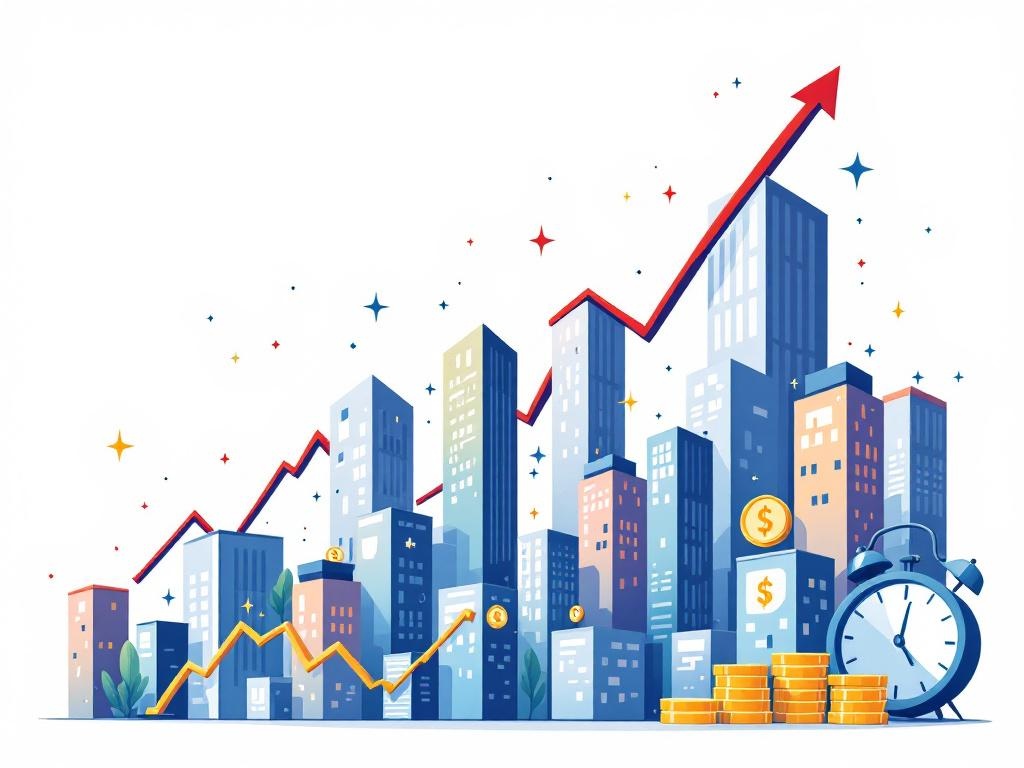Stock Market Surges to Record Highs Amid Economic Resurgence

New York, Thursday, 31 July 2025.
Fueled by receding stagflation fears, the stock market has soared, reaching unprecedented highs. Investors are reassured by a stable economic outlook and diminishing threats from tariffs and inflation.
Economic Stability and Market Confidence
After months of apprehension over stagflation—a condition marked by slow economic growth paired with high inflation—the stock market has rebounded spectacularly. This transition to a bull market is a direct result of reduced fears over inflation and a surprising resilience to elevated U.S. tariffs. The current average effective tariff rate in the United States is the highest in more than 90 years, at approximately 18.2%, yet this has not significantly deterred market performance [1]. Recent forecasts by prominent financial institutions, such as Goldman Sachs and Bank of America, have improved, reflecting growing investor confidence in economic resilience despite earlier recession projections [1].
Sector Performance and Tariff Influence
Sector-wise, the healthcare sector has shown a robust recovery with a 3.5% jump recently, while tech stocks lagged behind, achieving only a 0.4% gain [2]. This sectoral performance underscores a broader market rally that bucks the expected adverse effects of President Trump’s tariffs, which are set to undergo adjustments with upcoming deals with the European Union, aiming to lower U.S. export tariffs to 15% [2]. However, some financial experts remain cautiously optimistic, suggesting that the complete impact of these tariffs is still unfolding, and a potential market correction could loom as optimism potentially outpaces realistic expectations [1].
Interest Rates and Economic Indicators
The Federal Reserve has played a critical role in shaping market perceptions, with its interest rate policy heavily influencing economic strategies. The current rate remains steady at 4.25% to 4.5%, with inflation recorded at 2.7%, marking an escalating trend over recent months [3]. Despite initial anxieties, Federal Reserve Chair Jerome Powell’s assurance that no imminent rate cut decisions are planned has reassured some investors, decreasing the anticipated rate cut probability for September to 40%, a drop from previous quarters [3]. These decisions signal a cautious approach amidst fluctuating inflation indicators, which are vital for maintaining long-term economic stability [3].
Emerging Markets and Global Investment Shifts
Globally, there has been a noticeable tilt towards emerging markets, with JPMorgan affirming a bullish stance on these economies, driven by the depreciation of the U.S. dollar and the stabilization of trade relations with China [4]. Emerging markets, including China, India, South Korea, and Brazil, are seeing heightened investment interest, buoyed by expectations of prolonged U.S. dollar weakening and favorable economic conditions [4]. This strategic pivot highlights a broader investment realignment as international investors diversify away from traditional U.S. assets in favor of potentially higher-growth regions, influenced by significant policy shifts and geopolitical recalibrations [4].